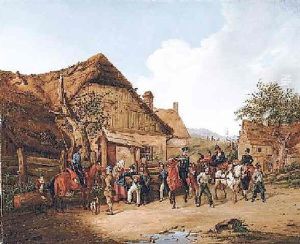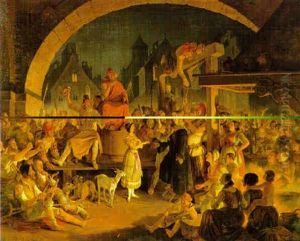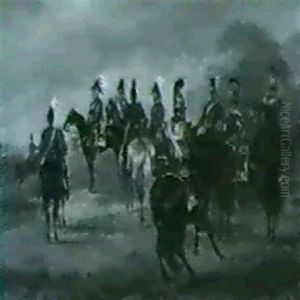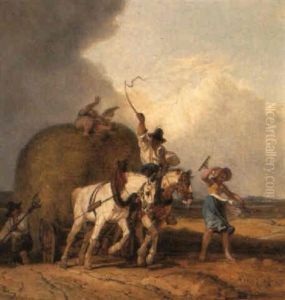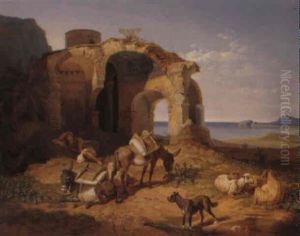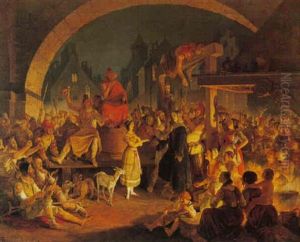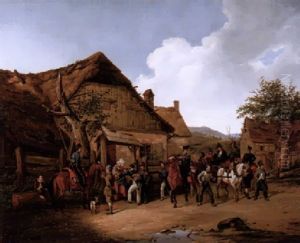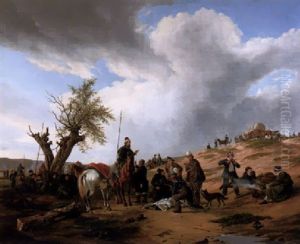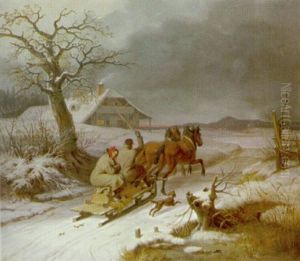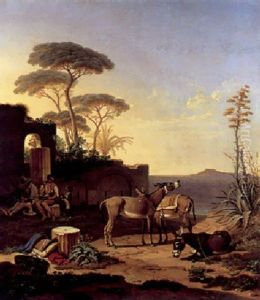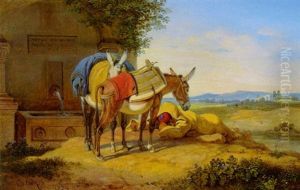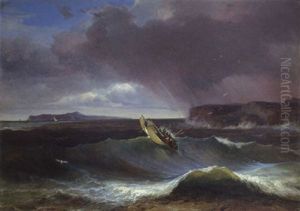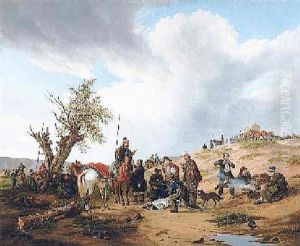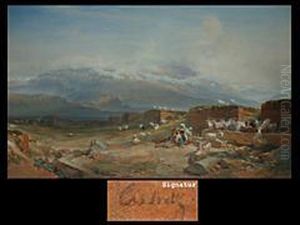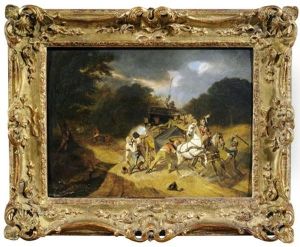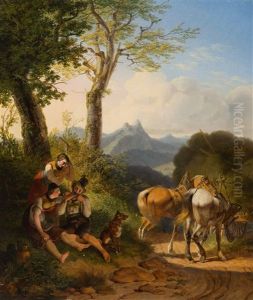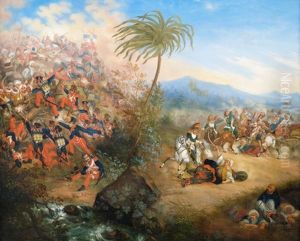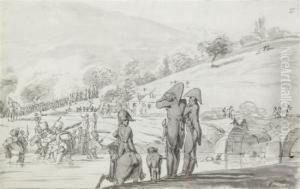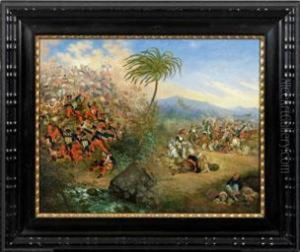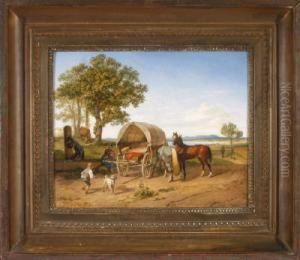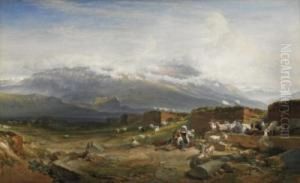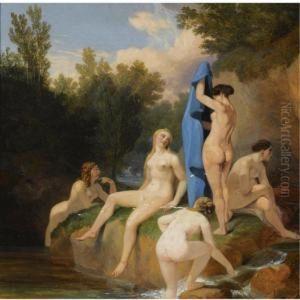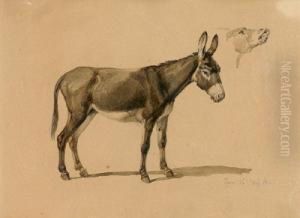Karl Wilhelm Von Heideck Paintings
Karl Wilhelm von Heideck was a multifaceted figure in the 19th century, known not only for his contributions as a Bavarian military officer but also as a talented painter, particularly in the genres of military subjects and landscapes. Born on December 6, 1788, in Ingolstadt, Bavaria, Heideck embarked on a career that spanned various disciplines, including art, military service, and archaeology, reflecting the broader intellectual and cultural currents of his time.
Heideck's military career began in the early 19th century, and he participated in several key campaigns during the Napoleonic Wars. His experiences as a soldier deeply influenced his artistic work, providing him with both subject matter and a keen eye for the details of military life and the landscapes through which he traveled. After the Napoleonic Wars, Heideck continued his military service, which took him to various parts of Europe and the Mediterranean, further enriching his perspectives and artistic repertoire.
Aside from his military endeavors, Heideck was an accomplished painter. His works often depicted scenes from his military campaigns, including battles and everyday life of soldiers, as well as the landscapes of the regions he visited. These paintings are notable for their attention to detail, composition, and the ability to convey the atmosphere of the depicted scenes. Heideck's art provides valuable historical insights into the military and cultural contexts of the early 19th century, embodying the spirit of Romanticism that was prevalent in European art and literature of the time.
After retiring from active military service, Heideck devoted more time to his artistic pursuits, traveling extensively in Greece and the Near East, where he also engaged in archaeological studies. These travels further influenced his artistic output, introducing elements of Orientalism into his work and contributing to the European fascination with the exotic and the ancient that characterized much of 19th-century art and culture.
Karl Wilhelm von Heideck's legacy is that of a Renaissance man of the 19th century, whose life and work bridged the worlds of military service, art, and archaeology. He passed away on February 21, 1861, leaving behind a body of work that continues to be of interest for both its artistic merit and its historical value. Through his paintings, Heideck offers a window into the Napoleonic era and the early 19th century, reflecting the tumultuous times he lived in and the diverse interests that he pursued throughout his life.
